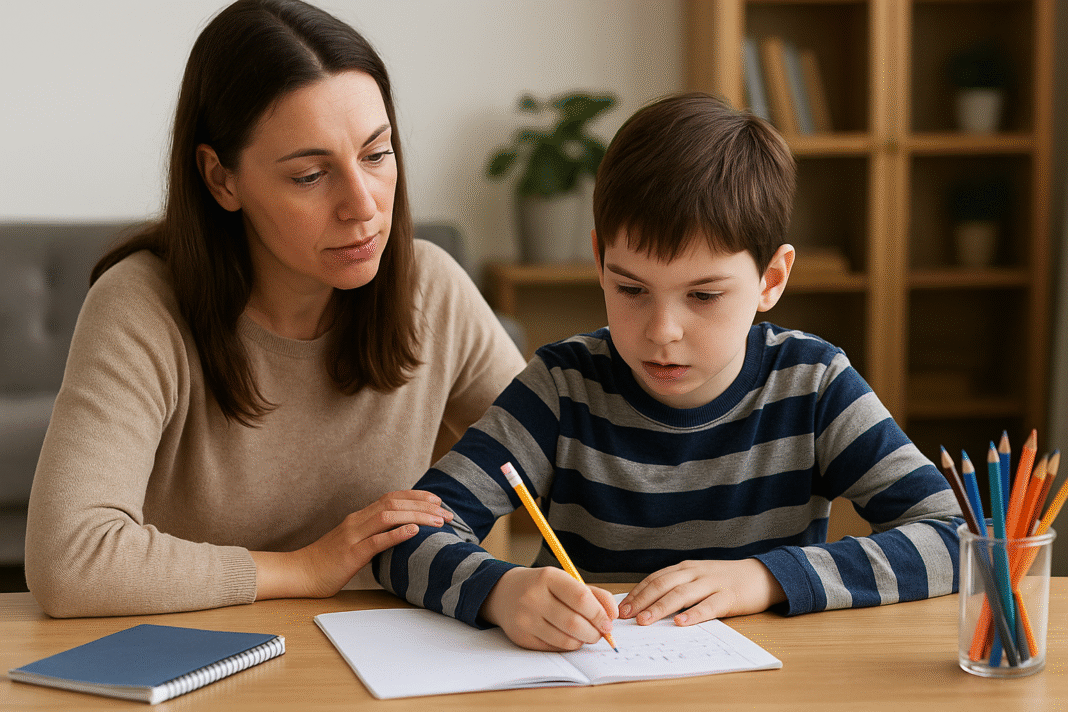Adults living with AuDHD, the co-occurrence of Autism and ADHD, often experience a complex mix of strengths and challenges. From sensory sensitivity and executive dysfunction to emotional regulation struggles, daily life can feel overwhelming. Whether you’re an educator, a support professional, or an adult with AuDHD, understanding practical strategies can make a significant difference.
In this article, we share research-informed, neurodiversity-affirming strategies to help adults with AuDHD thrive.
1. Create External Structure to Support Executive Functioning
Adults with AuDHD may struggle with planning, prioritization, and task initiation. Instead of relying on internal organization, external supports can be game-changers.
Try:
- Visual daily planners with color codes
- Checklists with small, rewarding steps
- Time-blocking apps (like Clockify or Sunsama)
- Clear routines, especially for mornings and transitions
Pro Tip: Use « body doubling » (working with a partner in the same room) to enhance focus and motivation.
2. Address Sensory Sensitivities Proactively
Sensory overload is common in AuDHD. Adults may be hyper- or hypo-sensitive to sounds, textures, lights, or smells — often simultaneously.
Strategies:
- Carry sensory kits (noise-canceling headphones, fidget tools, sunglasses)
- Use calming scents (lavender, eucalyptus) in overstimulating environments
- Identify and avoid known sensory triggers whenever possible
- Opt for soft, seamless clothing when dressing causes distress
Tool Tip: Apps like Tide or Binaural Beats can help regulate sensory input through calming audio.
3. Embrace Task Switching and Interest-Based Motivation
While ADHD brings impulsivity and distractibility, autism often involves hyperfocus and rigidity. Adults with AuDHD may swing between extremes — losing focus or getting stuck on one task.
Support with:
- Gentle timers to remind of breaks
- “Task sandwich” method: combine a boring task between two enjoyable ones
- Interest-based motivation: link goals to passions
- Permission to move between tasks if overwhelmed
Reminder: Flexibility is not failure. It’s part of neurodivergent productivity.
4. Use Scripts and Social Supports to Navigate Communication
Autistic traits may make social communication challenging, while ADHD may lead to interrupting or emotional reactivity. Together, these challenges can cause social fatigue or misunderstandings.
Tools:
- Communication cue cards or reminders
- Written scripts for difficult conversations
- Role-play practice with trusted friends
- Scheduled downtime after social events
Support Idea: Build a small, safe social network that understands your needs.
5. Focus on Emotional Regulation, Not Suppression
Emotional dysregulation is a core challenge in both autism and ADHD. Many adults with AuDHD describe emotional flooding — intense emotions that are hard to control or even name.
What Helps:
- Label emotions using mood charts or apps (like Moodnotes)
- Use somatic grounding tools: cold water, movement, deep breathing
- Create a decompression space at home
- Self-compassion practices (Dr. Kristin Neff’s work is a great start)
Remember: Meltdowns are not misbehavior — they are signals of overload.
6. Reframe Support as Empowerment
Too often, adults with AuDHD have internalized shame about needing support. Reframing accommodations as tools — not crutches — is essential.
Examples:
- Asking for written instructions at work
- Using speech-to-text to manage writing overload
- Wearing sensory-friendly earplugs in meetings
- Taking movement breaks during long tasks
Key Idea: Empowerment starts when we normalize support.
Final Thoughts
Living with AuDHD is not about “fixing” deficits — it’s about understanding your brain and creating the conditions to thrive on your terms. Support isn’t about control — it’s about freedom.
If you’re a teacher, employer, family member, or therapist: your support matters more than you know.
Free Download
Want a printable version of these strategies?
Visit our Free Resources section to download the AuDHD Support Strategy Table.
Recommended Resources
- « Unmasking Autism » by Dr. Devon Price
- « Driven to Distraction » by Dr. Edward Hallowell
- Loop Earplugs – sensory-friendly and stylish
- Apps: Notion, Time Timer, Moodnotes, Breathe+ Coherence Breathing
Help Us Grow
If you found this guide helpful, please share it with educators, family, or friends who support neurodivergent adults. You can also visit our Teachers Pay Teachers store for more printable tools.



